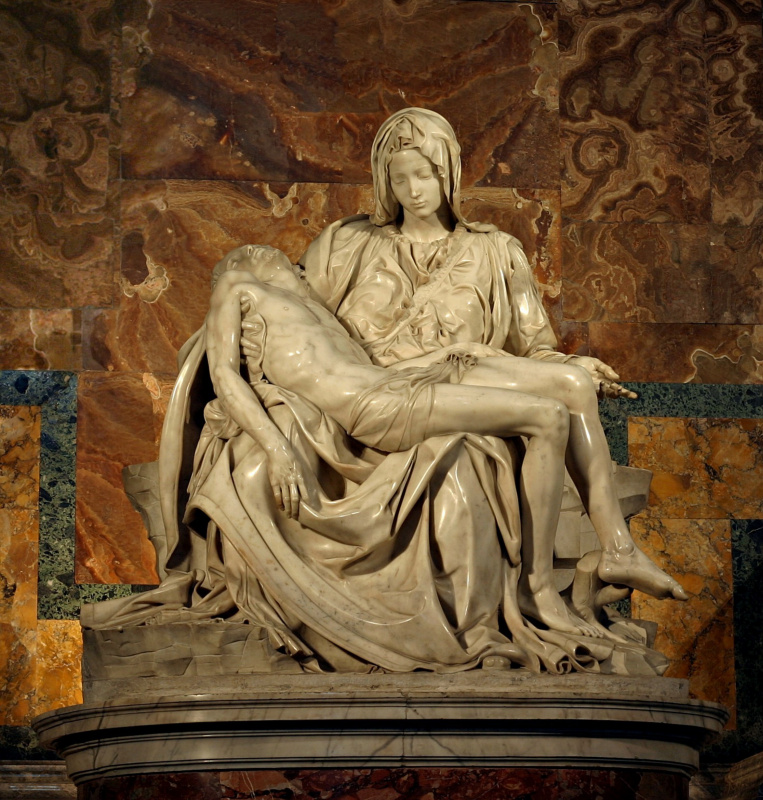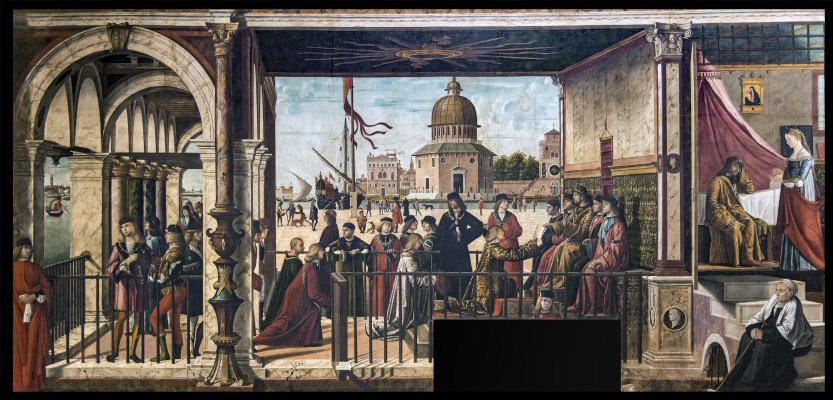Artist`s Signature
How artists used to leave their works unsigned and how they acquired the taste for autographs
From time to time, one cannot help but feel perplexed at the sight of four laconic letters ‘Anon' that should denote the authorship of a certain painting of old. A little more satisfying is the inscription ‘Master of' — followed by some German or Flemish town or an altar of some saint. Opening a list of artists from the 13th-15th centuries, one would find the letter ‘M' in abundance — not because names like Michels, Mateusz or Melchior were particularly popular at the time, but because there were countless nameless masters: Master of Saint Veronica, Master of the Virgo inter Virgines, Master of the Embroidered Foliage, Master of the Vienna Adoration…
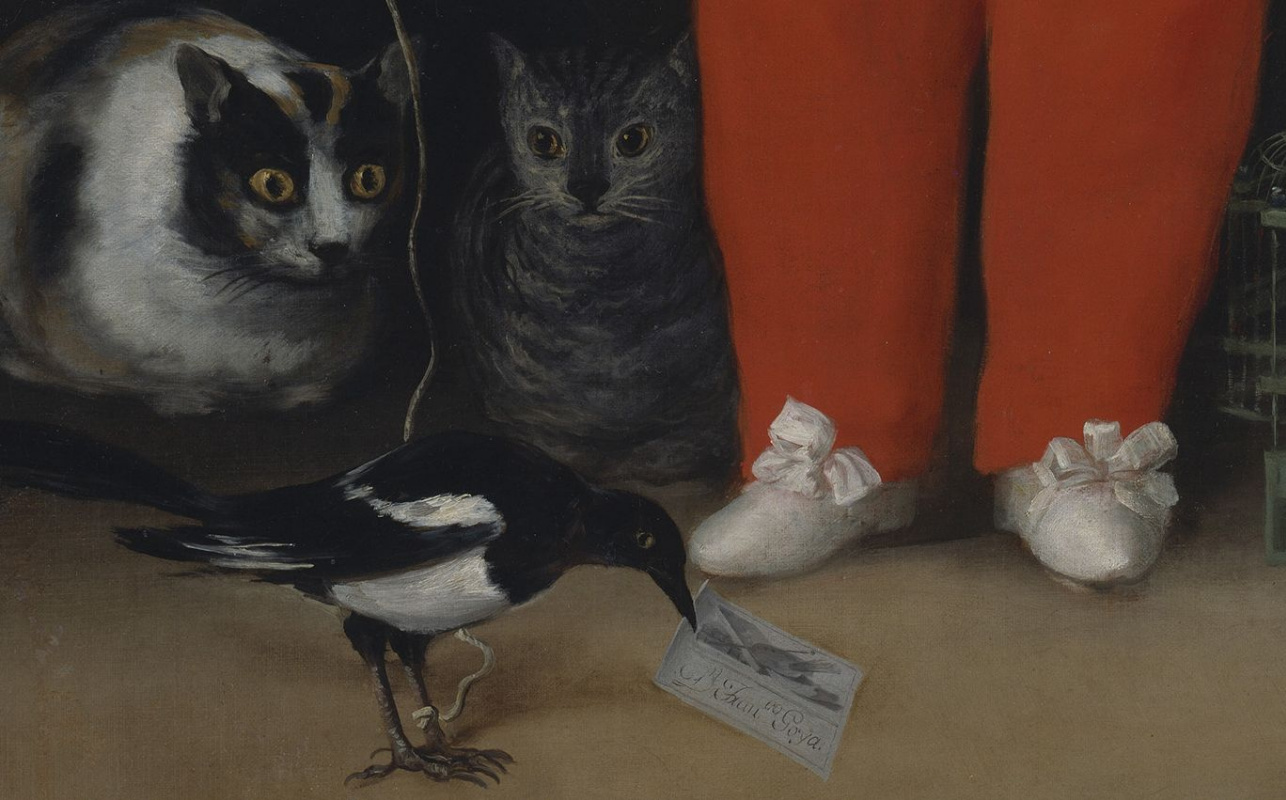
Why did artists of that time choose to make life harder for art historians and not write their name down somewhere at the foot of Madonna’s throne?
The factor that restrained the majority of such immodest desires was probably fear of God: vanity was a mortal sin. Furthermore, why would one bother recording the name of the artist of that particular altar decoration, when the Lord already knew it perfectly well?
Yet the ancient sculptors signed their works with pride. Well, not only sculptors: even the Greek ceramists (starting roughly from the mid-7th century BC) often supplemented their red and black figures with two signatures — those of the potter and the artist, turning any sold amphora into an advertisement.
Yet the ancient sculptors signed their works with pride. Well, not only sculptors: even the Greek ceramists (starting roughly from the mid-7th century BC) often supplemented their red and black figures with two signatures — those of the potter and the artist, turning any sold amphora into an advertisement.
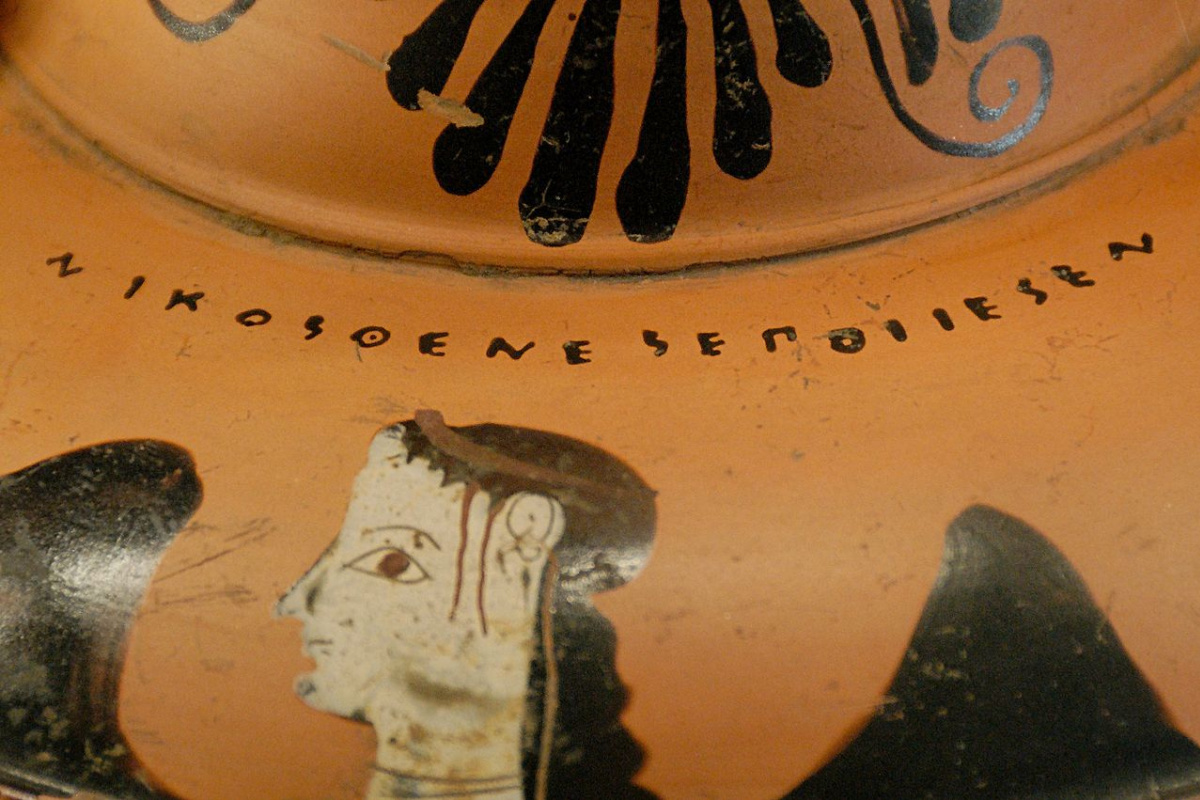
Signature of the potter Nikosthenes on a black-figure amphora, ca. 530−520 BC, the Louvre.
Should we compare pottery with altars in this regard?
In fact, we should — not only because good vases were highly appreciated in antiquity, but also because decorating altars was a trade; after all, neither painting, nor sculpture, nor jewelry were considered high art in the Middle Ages.
However, artists did not need any particularly wide advertisement — up to a point, almost all their works were commissioned, and the orders were distributed by guild leaders, who already knew the names of masters and journeymen and, thus, didn’t need any names written on the work itself. Of course, the artists' names were mentioned in the books and receipts, but very few of them have survived until today.
After all, what made the masters think about signatures ?
The expansion of the "client base" played a certain role here. Roads, mail and diplomacy in the 13th century were obviously better developed than in the 12th (and the 14th apparently had it better than the 13th). This means that a talented master of the 1100s would have been known only in the vicinity of his city, whereas in 1400 or 1500 he would have had good chances of becoming famous beyond his hometown and even could have worked for a customer he had never met face-to-face. Therefore, it made sense to design an identification mark for the piece of artwork, and make the customers associate a certain name with a certain quality. It also helped that the sacred subjects had come to feature more and more secular details — the stories expanded to include architecture and landscapes, the scarce and symbolic world became saturated with fine details, and the faces of donors appeared on the paintings. Donors were ordinary mortals — thus, consequently, weaving his own name into the ornament of a vase or immortalizing his face in the image of a servant in the retinue of the Magi would no longer be deemed sacrilegious for an artist.
Such self-portraits in paintings were one of the first authors' signatures that we know of. Even those masters who had never ventured to mark the altar board with their initials would leave them. It is a pity that such "signatures" are so difficult to decipher now.
Is it true that the man in the red hat, standing alone in the window of Memling’s The Donne Triptych is Hans Memling himself? Do we really see the face of Rogier van der Weyden on the four copies of St. Luke Drawing the Virgin? And this gloomy man, supporting the lifeless body of Christ — would he be Hugo van der Goes?
In fact, we should — not only because good vases were highly appreciated in antiquity, but also because decorating altars was a trade; after all, neither painting, nor sculpture, nor jewelry were considered high art in the Middle Ages.
However, artists did not need any particularly wide advertisement — up to a point, almost all their works were commissioned, and the orders were distributed by guild leaders, who already knew the names of masters and journeymen and, thus, didn’t need any names written on the work itself. Of course, the artists' names were mentioned in the books and receipts, but very few of them have survived until today.
After all, what made the masters think about signatures ?
The expansion of the "client base" played a certain role here. Roads, mail and diplomacy in the 13th century were obviously better developed than in the 12th (and the 14th apparently had it better than the 13th). This means that a talented master of the 1100s would have been known only in the vicinity of his city, whereas in 1400 or 1500 he would have had good chances of becoming famous beyond his hometown and even could have worked for a customer he had never met face-to-face. Therefore, it made sense to design an identification mark for the piece of artwork, and make the customers associate a certain name with a certain quality. It also helped that the sacred subjects had come to feature more and more secular details — the stories expanded to include architecture and landscapes, the scarce and symbolic world became saturated with fine details, and the faces of donors appeared on the paintings. Donors were ordinary mortals — thus, consequently, weaving his own name into the ornament of a vase or immortalizing his face in the image of a servant in the retinue of the Magi would no longer be deemed sacrilegious for an artist.
Such self-portraits in paintings were one of the first authors' signatures that we know of. Even those masters who had never ventured to mark the altar board with their initials would leave them. It is a pity that such "signatures" are so difficult to decipher now.
Is it true that the man in the red hat, standing alone in the window of Memling’s The Donne Triptych is Hans Memling himself? Do we really see the face of Rogier van der Weyden on the four copies of St. Luke Drawing the Virgin? And this gloomy man, supporting the lifeless body of Christ — would he be Hugo van der Goes?
Of course, these kinds of "signatures" would do little in terms of attracting customers — though one might have still sought some gain: after all, by placing himself on a picture beside God, the artist basked in divine grace. Conversely, signing a picture in clear, legible letters could make him relish the material wealth from the customers who would became aware of his talent.
The Italians are thought to be the first to leave signatures on their works. This is a believable statement — after all, Italy was literally stuffed with fragments of antique sculpture and artists could certainly see more works of Greek or Roman masters, signed without any modesty. Northern artists soon followed the Italians in this fashion.
The Italians are thought to be the first to leave signatures on their works. This is a believable statement — after all, Italy was literally stuffed with fragments of antique sculpture and artists could certainly see more works of Greek or Roman masters, signed without any modesty. Northern artists soon followed the Italians in this fashion.
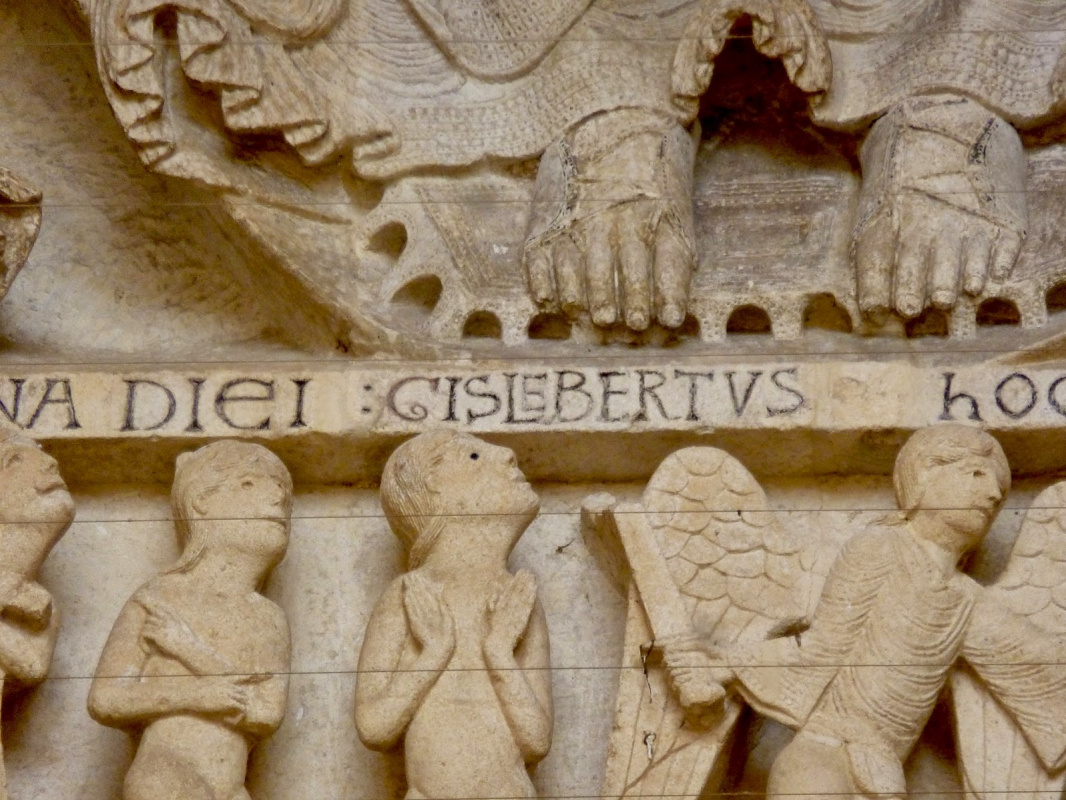
Presumably, one of the earliest "master's autographs" is the signature of the sculptor Gilbert (Gislebertus) under the Last Judgment scene in the cathedral of Saint Lazare, Autun (France), 1125−1145. Photo: Counterlight’s Peculiars
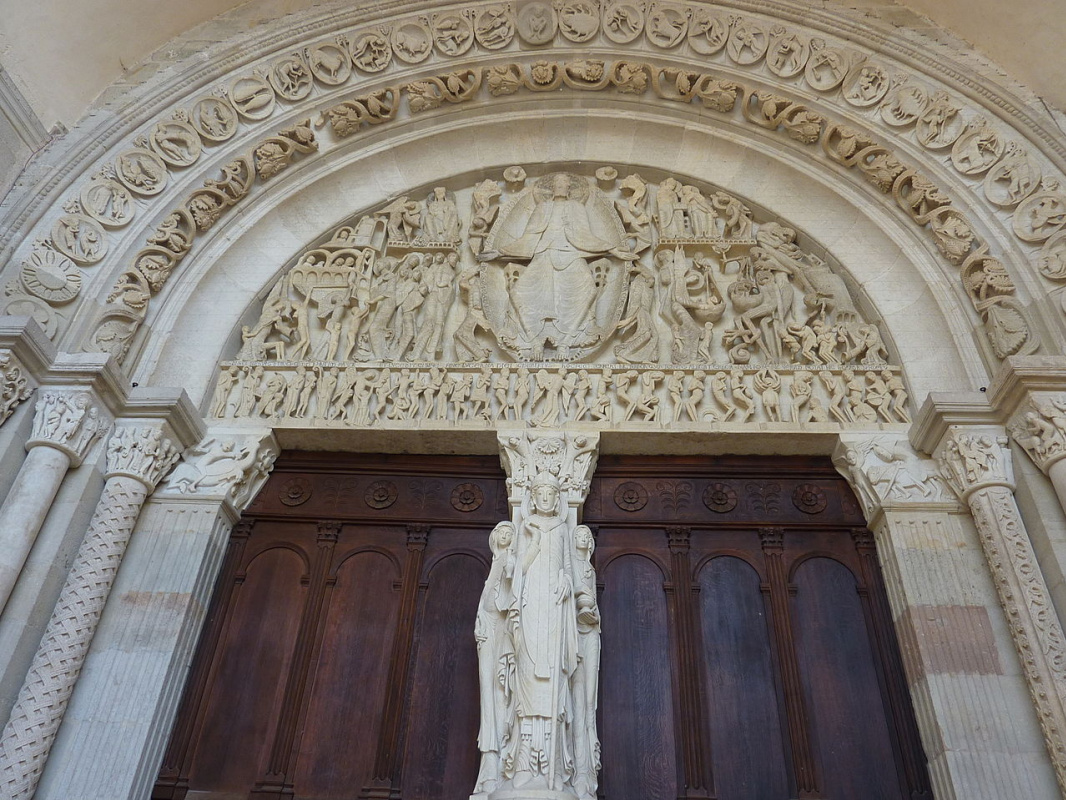
The Last Judgment by Gilbert in its entirety. Photo: Wikimedia Commons
Surprisingly, the early signatures (unlike the modern ones) were not a pair of letters timidly scratched in the corner — more often the inscription was thought out, beautifully and harmonically integrated into the composition of the picture or statue.
Experts have not decided yet whether Jan van Eyck’s inscription on the famous portrait was simply a confirmation of the fact that he indeed created the picture, or did his words "Jan van Eyck was here. 1434" mean that he was present there at this time and witnessed a certain event.
By the end of the 15th century, artists (as encyclopedias usually explain, "under the influence of Renaissance Humanism ") had finally cast away their modesty and begun to supplement their works not only with signatures, but also with dates and explanations praising their own talent. For example, definitely not the best of Pietro Perugino’s frescoes is signed: ‘Petrus Peruzinus, an excellent painter: if art is lost, then this painting revives it.' These naive words contain the very essence of the Renaissance
, the time when art became an extremely important part of life, and an artist could finally be seen as a significant person.
One of the most amusing stories about a signature has survived in an anecdote about Michelangelo thanks to Giorgio Vasari:
"…Michelangelo, having come to the place where Pieta was exhibited, saw there a large number of visitors from Lombardy, who praised the artwork very much; however, he overheard one of them asking another about the author, and the reply was ‘it was our Milanese man, il Gobbo.' Michelangelo did not say anything, but it seemed unfair, to say the least, that his works were attributed to a stranger. One night he broke into the church with a lamp and chisel and cut out his name on the sculpture."
"…Michelangelo, having come to the place where Pieta was exhibited, saw there a large number of visitors from Lombardy, who praised the artwork very much; however, he overheard one of them asking another about the author, and the reply was ‘it was our Milanese man, il Gobbo.' Michelangelo did not say anything, but it seemed unfair, to say the least, that his works were attributed to a stranger. One night he broke into the church with a lamp and chisel and cut out his name on the sculpture."
Pieta (Lamentation Of Christ)
1499, 174×195 cm

Michelangelo’s signature on the sculptural group Pieta.
Painters were usually not as brave as Michelangelo, and tended to use signatures, cartouches, or dummy sheets, which appeared as if they were pinned to the background; sometimes the painters would make the words "carved out" on depicted windowsills and column bases — this way could simultaneously immortalize the artist’s name and show off his skill. Sometimes the autograph could have been left as imitation of the coinage on the edge of the goblet or as text on a letter the character held in their hands.

Autograph by Vittore Carpaccio on one of the works within the cycle dedicated to Saint Ursula. Look for it at the bottom of the picture below.
Jacopo de Barbary. Still Life with a Partridge, Gauntlet and Crossbow Bolt.
The leaf under the still life has the name of the artist and the date of creation, as well as his personal sign: caduceus and snakes
Titian. Portrait of the Antiquarian Jacopo Strada.
The inscription on the letter: ‘Al Mag. со il Signor Titian (o) Vecellio… Venezia' (to the Magnificent Signor Titian Vecellio … Venice).
Art critics should be particularly grateful to Albrecht Durer: from the very beginning of his career he would not only sign his name on the artwork, but also leave a detailed commentary, e.g. ‘I painted myself in the mirror in 1484, when I was still a child. Albrecht Durer.' In a few particularly serious works, Durer would hand a placard with a signature to himself, modestly but proudly standing somewhere in the background of the Ascension of the Lord. Moreover, to make sure his works would never be attributed to a Fleming, he also inscribed ‘German' or ‘Nurembergian' on them.
Self-portrait at the age of 13
1484, 27.5×19.6 cm
Lucas Cranach the Elder, Durer’s contemporary, also marked his creative heritage (of which more than 5,000 works have survived) with a sign he developed at the dawn of his career. He used the coat of arms of the Cranach family: a dragon with bat wings, holding a ring in its mouth. Of course, many art critics are unhappy with this master of old, for it may be difficult to distinguish his works from that of his workshop — but in fact, he was always honest about that, adding the letters ‘LC', whereas the art created by his subordinates only boast the winged lizard. Cranach did this, of course, not for the convenience of future researchers, but in obedience to the guild rules: artworks, which the master did not touch, should have been marked only with the workshop sign (although this reduced their price). Why not tag them with the names of their real authors, then? Alas — prior to receiving the master’s title, students and apprentices did not have the right to sign, and the entirety of their works belonged to the head of the workshop.
One can reasonably assume that if the master’s signature could raise the price of an artwork, it could have been forged. And they have been, of course. Albrecht Durer made his famous second trip to Italy not so much for the sake of getting to know new trends in art, but in order to stop the printing of falsified "Durer prints" in Italy (for more details, see the description of Durer’s The Feast of the Rosary). It did not help Durer much, though — the Italians forbade copying the signature of the captious German, but did not forbid copying his works. However, artists of the past would not shun forging the signature of a compatriot as well, especially if the latter was dead and could not sue them — for example, Pieter Bruegel the Elder for a long time worked in a workshop that produced engravings with the signature of the deceased (albeit still in great demand) Bosch.
By the 17th century, the artist’s signature had finally acquired the form familiar to us — several letters or a full name, sometimes supplemented by a date, in careless writing or calligraphy (depending on the master), that should have attested to the authenticity of the painting and raised its price. Yet sometimes the signature became something more — for example, Goya’s game with the signatures on The Black Duchess apparently was designed to confirm the close relationship between the artist and the model.
Portrait of Duchess Alba
1797, 210.1×149.2 cm
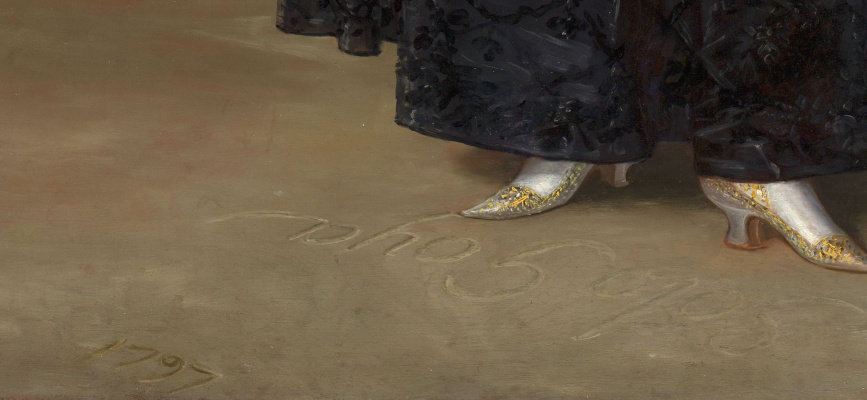
The Duchess points to the inscription made on the sand: ‘Solo Goya' (Only Goya).

The artist decorated the hand of the duchess with two rings with the inscriptions ‘Alba' and ‘Goya'.
The twentieth century gave art critics many ways to determine the authorship even if there is no signature — and yet it is still important enough, its presence can raise the price of an artwork by several dozen times. The value of these few letters is perfectly illustrated in the anecdote about Picasso, who once paid for a dinner with a drawing on the restaurant check, but then declined to sign it, retorting to the owner, "My dear, I’m only buying dinner here, not the whole restaurant".
The head illustration: Francisco Goya. Manuel Osorio Manrique de Zúñiga, a boy. Fragment with the artist’s signature
Text by Oksana Sanzharova






